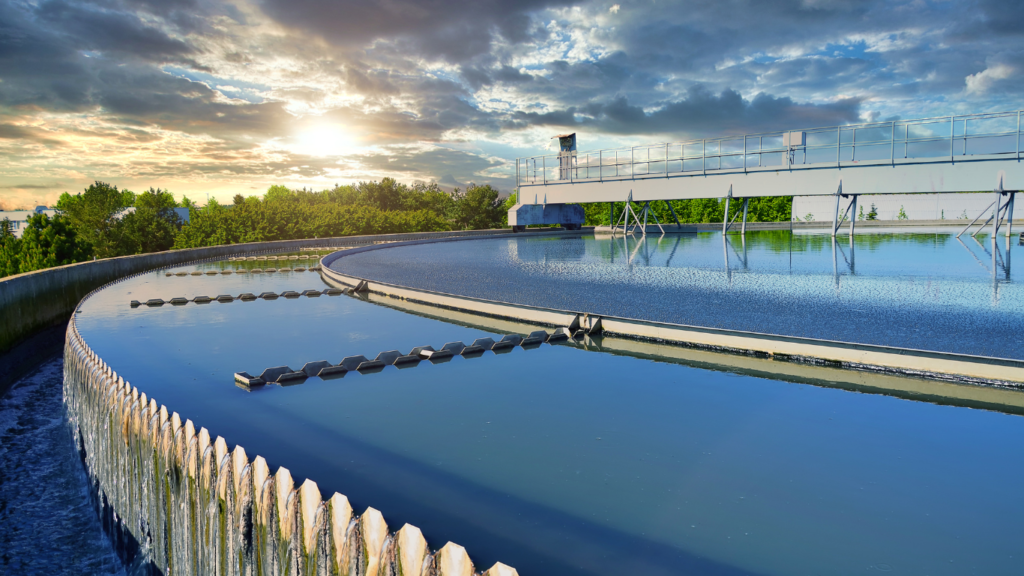Introduction
Water is one of our planet’s most precious resources, and the responsible management of wastewater is crucial for both environmental sustainability and public health. Traditional wastewater treatment methods have been the norm for decades, but Zero Liquid Discharge (ZLD) is the only alternative for the industries to operate and conserve water. In this blog, we will conduct a comparative analysis of ZLD and traditional wastewater treatment methods to understand their benefits and drawbacks.
Traditional Wastewater Treatment
Traditional wastewater treatment processes for industries involve a series of steps aimed at removing impurities and pollutants from industrial wastewater before its safe discharge into the environment. Here is a concise overview of these key steps:
- Preliminary Treatment: Wastewater from industrial processes is first screened to remove large objects, such as debris and plastics, to prevent damage to equipment downstream. Often, grit chambers are used to settle heavy materials like sand and gravel.
- Primary Treatment: In this stage, the wastewater is allowed to settle in large tanks, promoting the separation of heavier solids, which settle to the bottom as sludge, from the liquid. This primary clarification process significantly reduces the concentration of suspended solids.
- Secondary Treatment: After primary treatment, the wastewater undergoes biological treatment. Microorganisms are introduced to break down organic matter remaining in the water. This can occur through activated sludge processes or in natural lagoon systems. Secondary treatment reduces the biochemical oxygen demand (BOD) and chemical oxygen demand (COD) of the wastewater.
- Tertiary Treatment: Some industries require an additional step to further polish the effluent. Tertiary treatment may involve advanced filtration methods, chemical coagulation, or disinfection with chlorine or UV radiation to remove remaining fine solids and pathogens.
- Discharge or Reuse: Depending on local regulations and the quality of treated water, the effluent may either be discharged into surface waters or reused within the industrial facility for non-potable purposes, such as cooling or irrigation.
Zero Liquid Discharge Process
ZLD is an innovative wastewater treatment approach designed to recover nearly all water from wastewater and minimize discharge. It aims to achieve 100% water recovery, leaving zero liquid waste. Here are some key aspects of ZLD:
Scaleban Technology is an advanced water treatment technology. Our treatment begins with the initial stage of pretreatment, which involves the removal of coarse solids and oil from the wastewater to prevent potential clogs and damage to downstream equipment.
Check our ZLD Case Studies for More!
Following pretreatment, the biological treatment stage comes into play, utilizing biological processes to break down organic contaminants,, this technology of treating water is called ETP (Effluent Treated plant). This phase effectively reduces the levels of biochemical oxygen demand (BOD) and chemical oxygen demand (COD) in the wastewater.
This treated effluent from ETP is then taken as a makeup to cooling tower where with the help of Scaleban technology, cooling towers are operated at high COC of 15-20 at high hardness of 3,00,000 PPM i.e 25-30% concentration without Scaling, Bio fouling and corrosion within cooling tower circuit.
At this high hardness very negligible blowdown is taken which can be taken into ash quenching or directly at ATFD hence eliminating wastewater RO and MEE.
.
Check our ZLD Case Studies for More!
Comparative Analysis
Now, let’s delve into a comparative analysis of ZLD and traditional wastewater treatment across various aspects:
Water Recovery:
Traditional Treatment: While traditional methods can achieve reasonable water quality improvements, they typically do not recover water to the same extent as ZLD.
ZLD: ZLD excels in water recovery, often reaching near 100% efficiency. This is particularly valuable in water-scarce regions or industries where water reuse is essential.
Environmental Impact:
Traditional Treatment: Despite improvements in water quality, traditional treatment methods can still have negative environmental consequences due to the discharge of treated wastewater.
ZLD: ZLD significantly reduces the environmental impact by minimizing or eliminating wastewater discharge, thus preserving natural ecosystems.
Resource Recovery:
Traditional Treatment: Traditional methods focus primarily on contaminant removal and often miss the opportunity to recover valuable resources from wastewater.
ZLD: ZLD systems excel in resource recovery by capturing salts, minerals, and chemicals from wastewater, promoting sustainability and reducing waste.
Energy Consumption:
Traditional Treatment: Many traditional wastewater treatment plants consume substantial amounts of energy, contributing to operational costs and greenhouse gas emissions.
ZLD: While ZLD technology doesn’t need any power or energy to operate hence eliminates high CO2 emissions and provides sustainability in ZLD solutions .
Cost Considerations:
Traditional Treatment: Traditional methods are often considered cost-effective upfront but may incur hidden costs related to environmental mitigation and resource management.
ZLD: ZLD with Scaleban Technology provides 80% reduction in CAPEX and OPEX in comparison to traditional ZLD systems, Scaleban Technology can provide huge relief to organisations in finding a way towards cost effective and Sustainable ZLD.
Applicability:
Traditional Treatment: Traditional methods are well-established and suitable for a wide range of wastewater types but may struggle with highly concentrated or complex wastewaters.
ZLD: ZLD is particularly suitable for industries with concentrated or challenging wastewater streams, such as chemical manufacturing, mining, and power generation.
Conclusion
In conclusion, Zero Liquid Discharge (ZLD) represents a promising shift in wastewater treatment practices. While traditional wastewater treatment methods have served us well, they have limitations in terms of water recovery, environmental impact, resource recycling, and energy consumption. ZLD, on the other hand, offers a more sustainable and comprehensive approach by maximizing water and resource recovery while minimizing environmental harm.
The choice between traditional treatment and ZLD should consider specific industry needs, water availability, environmental concerns, and long-term sustainability goals. As we face increasing water scarcity and environmental challenges, adopting innovative approaches like ZLD can play a vital role in preserving our precious water resources for future generations.
